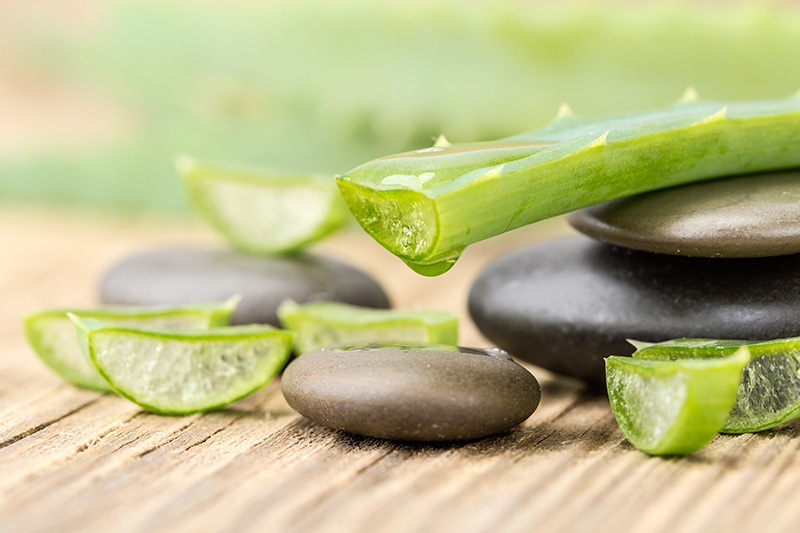Tulip Insider: 7 Facts Hidden in the Petals
Posted on 19/08/2025
Tulip Insider: 7 Facts Hidden in the Petals
Discover the untold stories and fascinating secrets woven within the colorful petals of tulips. Delve into the world of these exquisite blooms as we uncover the information every tulip insider should know.

Introduction to Tulip Mystique
The tulip--a symbol of spring's promise and nature's flawless artistry--has considerably more secrets than its delicate appearance suggests. These flowers have left an indelible mark not only on gardens and fields worldwide, but also in global history, culture, art, and economics. If you're eager to become a true tulip insider, read on as we peel back the petals to reveal seven surprising facts about these remarkable blooms.
Fact 1: The Unexpected Origins of Tulips
The Tulip Trail from Asia to Europe
Many associate tulips with the Netherlands, but these flowers actually originated in the mountainous regions of Central Asia--particularly in modern-day Kazakhstan, Iran, and Turkey. It was in the 10th century that Persian poets celebrated the tulip's beauty, well before the flower made its journey to Western Europe.
- Persian and Ottoman Empires: Tulips played a vital role in medieval Persian and Ottoman gardens, often depicted in their art and mosaics.
- Migration to Europe: It was not until the 16th century that tulip bulbs made their way to the gardens of Vienna, courtesy of ambassadors and botanists. From there, their popularity blossomed across Europe.
By understanding the real origin of tulips, one gains deeper appreciation for their cross-cultural journey, making them a floral bridge between continents.
Fact 2: The Secret Science Behind Tulip Colors
How Genetics and Viruses Paint Petals
Have you ever wondered why tulip colors are so vibrant and varied? The answer lies within their genetics and the mysterious influence of viruses.
- Genetic Diversity: Hundreds of tulip species naturally occur, boasting an impressive array of colors from cherry reds to buttery yellows and inky purples. Selective breeding has amplified this diversity, giving rise to over 3,000 registered varieties.
- Color-Breaking Virus: During the Dutch Golden Age, a viral infection (Potyvirus) caused stunning "broken" color patterns on tulip petals. These rare and unpredictable color streaks became highly prized during the infamous Tulip Mania period, driving prices to extraordinary heights.
Understanding what creates a tulip's unique hue is key to becoming a true tulip insider. Whether it's a result of genetic engineering or a virus' artistic touch, every tulip petal hides a fascinating tale.
Fact 3: Tulip Mania--History's First Economic Bubble
The Hidden Economic Legacy of Tulips
Perhaps the most famous chapter in tulip history is Tulip Mania. This period, in the early 17th century, represents the world's first recorded speculative bubble.
- Dutch Obsession: By the 1630s, tulips had swept through the Netherlands. Tulip bulbs became a symbol of status and sophistication, and their prices skyrocketed.
- The Crash: At the peak, some rare tulip bulbs were worth more than a luxurious Amsterdam canal house. But in 1637, the bubble burst, leaving investors bankrupt and changing the economy forever.
Exploring Tulip Mania is a lesson in both economic caution and the enduring allure of tulips. The frenzy serves as a landmark for economists--and flower enthusiasts alike--to ponder the power of beauty and human nature.
Fact 4: Symbolism Hidden in Tulip Petals
Tulips in Art, Literature, and Emotion
Tulips are steeped in symbolism, transcending mere decoration. From poems to paintings, their petals have inspired emotions and conveyed powerful meanings through the ages.
- In Eastern Cultures: In Persian poetry, tulips symbolize love and martyrdom. The red hue, in particular, represents a lover's passion or the blood of heroes.
- In Western Traditions: Today, tulips signify perfect love, rebirth, and new beginnings. Different colors carry unique meanings--red for romance, white for forgiveness, purple for royalty, and yellow for cheerful sunshine.
This multi-layered symbolism enriches the experience of planting, gifting, or simply admiring tulips, making each bloom a subtle messenger of emotion.
Fact 5: The Botanical Wonders of Tulips
Adaptations and Survival Strategies
A true tulip insider knows that tulips are far tougher and more ingenious than they appear. Their survival strategies in the wild underpin their lasting global popularity.
- Bulb Storage: Unlike many flowers, tulips survive harsh winters by storing nutrients in underground bulbs. This adaptation ensures they re-emerge each spring, even after icy spells.
- Phototropism: Tulip stems bend and twist, following the light--a phenomenon called phototropism. This helps blooms maximize energy and display their petals to pollinators.
- Self-Propagation: Tulip bulbs multiply beneath the soil, naturally spreading and organizing into colorful clusters with little human intervention.
These botanical wonders make tulips resilient, low-maintenance, and perfect for novice gardeners or wildflower meadows.
Fact 6: Tulip Festivals--Global Celebrations
Where the World Comes to Marvel at Tulips
No other flower has inspired as many world-famous festivals as the tulip. These grand spectacles attract millions of visitors, showcasing the flower's mesmerizing beauty and cultural significance.
- Keukenhof Gardens (Netherlands): Known as the "Garden of Europe," Keukenhof features over 7 million tulip bulbs in bloom every spring, drawing tourists from all corners of the globe.
- Canadian Tulip Festival (Ottawa): A symbol of gratitude for Dutch-Canadian friendship during World War II, Ottawa's festival boasts stunning tulip displays and cultural activities.
- Skagit Valley Tulip Festival (USA): Held in Washington State, this festival transforms fields into vibrant tapestries, reflecting both American agricultural heritage and Dutch roots.
Whether you're a world traveler or an armchair botanist, visiting a tulip festival offers a chance to witness these blooms in unforgettable mass displays.
Fact 7: Surprising Uses and Health Benefits
Beyond Beauty: Tulips in Cuisine and Medicine
Tulips aren't just for show--they have surprising practical uses, some hidden in plain sight.
- Edible Petals: During WWII, tulip bulbs and petals served as emergency food in the Netherlands, providing sustenance during famine. Modern chefs sometimes use tulip petals to decorate salads and desserts (always ensure petals are pesticide-free).
- Medicinal Myths: While rare in modern herbal medicine, historic texts suggest crushed tulip petals were at times applied to rashes and bites. Today, their actual medical efficacy is unproven but remains a fascinating footnote in botanical history.
These unexpected uses prove tulips are far more versatile than many realize, deserving a place in cultural, culinary, and even medicinal discussions.

Tips from a Tulip Insider: Growing and Enjoying Tulips at Home
Now that you've uncovered the secrets hidden within tulip petals, you may be inspired to enrich your own space with these blooms. Here are a few expert tips for growing tulips, ensuring a dazzling display year after year:
- Choose the Right Bulbs: Source high-quality, disease-free bulbs from reputable growers. Exotic varieties and rare "broken" colors add conversation-starting intrigue.
- Optimal Planting Time: Plant tulip bulbs in the fall, about 6-8 weeks before frost. This gives them time to root but not sprout before winter.
- Soil and Sun: Tulips love well-drained soil and full to partial sun. Avoid overly damp locations to prevent rot.
- Smart Spacing: Arrange bulbs with enough space for air circulation, reducing risks of fungal diseases.
- Patience and Care: Allow foliage to die back naturally after flowering--it nourishes the bulb for next year's growth. Avoid cutting leaves prematurely.
By following these guidelines, you'll soon unlock the full beauty and mystery that only the tulip, nature's secret-keeper, can deliver.
Conclusion: Why Tulips Continue to Captivate
From ancient Asian pastures to Dutch masterworks, from economic highs and lows to vibrant festival fields, the tulip is a flower that holds countless secrets in its delicate petals. By understanding these hidden facts--their origins, mutations, symbolism, survival, and versatile uses--readers become tulip insiders themselves.
Whether you are planting bulbs in your garden, admiring a bouquet, or simply marveling at a field of color, remember: every tulip petal contains a world of history, science, and wonder. Let the tulip's insider knowledge inspire your own passion for nature's gentle masterpieces.
Frequently Asked Tulip Questions
- What is the rarest tulip color?
Purple or near-black tulips, like the renowned 'Queen of Night', are among the rarest and most prized by collectors. - Can you grow tulips indoors?
Yes, tulips can be forced to bloom indoors by chilling bulbs in the refrigerator and planting them in containers. - How long do tulip flowers last?
Blooms typically last 1-2 weeks outdoors, depending on weather; cut tulips can last 5-10 days in a vase with fresh water.
Stay curious, keep exploring, and let these tulip petal secrets transform the way you see one of the world's most beloved flowers.
Latest Posts
Sustain the Elegance of Cut Flower Bouquets
Red Roses: A Valentine's Day Symbol of Love and Passion
Tulip Insider: 7 Facts Hidden in the Petals
Hydrangea Essentials Every Gardener Should Know
Embrace the Floral Magic for a Better Mood and Enhanced Well-Being





